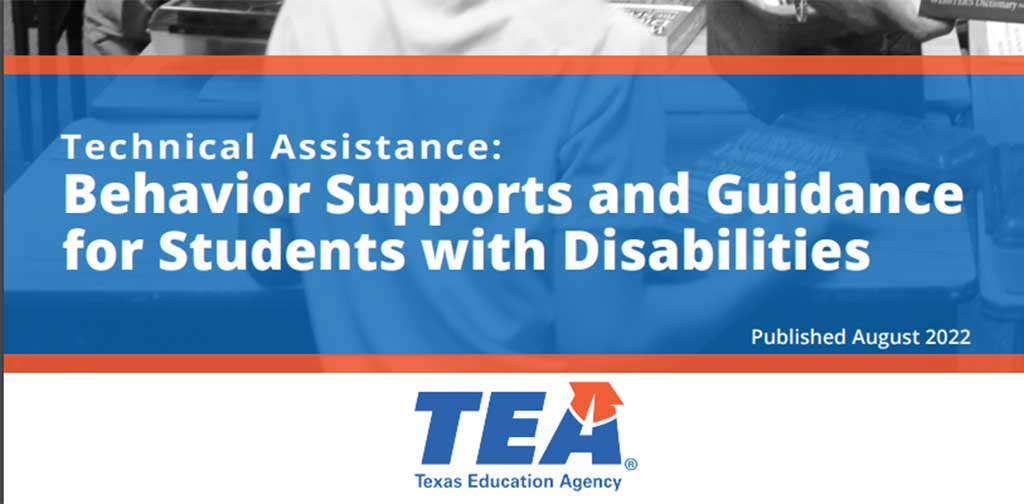Your child’s IEP must be built upon the PLAAFP. The PLAAFP should identify the needs of your child. IDEA regulations say – “(6) In evaluating each child with a disability under Sec. Sec. 300.304 through 300.306, the evaluation is sufficiently comprehensive to identify all of the child’s special education and related services needs, whether or not commonly linked to the disability category in which the child has been classified. (7) Assessment tools and strategies that provide relevant information that directly assists persons in determining the educational needs of the child are provided.” 300.304(6)&(7) A weak PLAAFP leads to a weak or inappropriate IEP, missing accommodations or modifications, and inappropriate LRE decisions.
Least Restrictive Environment (LRE) is an important concept of IDEA. Regulations say “Each public agency must ensure that– (i) To the maximum extent appropriate, children with disabilities, …. are educated with children who are nondisabled; and (ii) Special classes, separate schooling, or other removal of children with disabilities from the regular educational environment occurs only if the nature or severity of the disability is such that education in regular classes with the use of supplementary aids and services cannot be achieved satisfactorily.” 300.114(2) LRE requirements
“To the maximum extent appropriate” is subjective, making determining the LRE for a specific child difficult and confusing for parents and the IEP team (in Texas, this team is referred to as the ARD committee). Region 20 ESC’s The Least Restrictive Environment (LRE) Question and Answer Document says (question 3) this phrase means “The admission, review, and dismissal (ARD) committee is responsible for identifying the student’s needs and the appropriate placement in which these needs can be met. Placement decisions should begin with the least restrictive environment, i.e., the general education classroom with or without supplementary aids and services. All possible placement alternatives should be considered to ensure that services are delivered in the LRE.” In question 13, the document answers “How often is LRE a consideration for student placement? Placement is reviewed each year at a minimum. General education should be the first consideration on an annual basis (34CFR 300.116).” (emphasis in original)
Texas Project First is a joint project of the Texas Family to Family organization, ESC 9 and the Texas Education Agency. They have posted a Planning Matrix regarding LRE. It walks you through a series of questions to ask yourself and the ARD committee to help determine where your child can best meet IEP goals while staying in the LRE. Since Project First is an activity under the auspices of TEA and Region 9, parents have leverage in requesting that this matrix be used in ARD/IEP meetings. http://texasprojectfirst.org/node/174
The following information is excerpted from the Texas Project First website:
Placement
If the ARD committee decides that a student needs to receive their special education or related services outside the general education setting, the ARD committee must document and describe:
- Any previous efforts to educate the student in the general education classroom with supplementary aids and services and why those efforts were not successful;
- Any consideration of educating the student in the general education classroom and why those options were rejected;
- The behavior management plan and why it cannot be implemented in the general education classroom;
- The methods or curriculum the student needs and why it cannot be implemented in the general education classroom; and
- The disability conditions and educational needs and why those conditions and needs require placement in other than the general education classroom.
As the ARD committee considers placement, it must think about possible harmful effects as well as potential positive effects that a placement could have on the child. If the committee decides to remove the child from a regular classroom setting, it must ensure that, whenever appropriate, the child will be with other kids who are in regular classes.
One last consideration: Your child must be educated in the school she would attend if she did not have a disability, typically called your “neighborhood school.” If the IEP goals require a different placement other than the neighborhood school, the ARD committee must document the specific supplementary aids and services that were considered or tried to support the student on the home campus and why those services/aids were rejected.
Instructional Arrangement
Instructional arrangement refers to the code used by the school district to document the instructional setting for attendance purposes. All students receiving special education services must have an instructional setting code. Students can only have one setting code. This setting code is often noted at the end of the individual education program (IEP) and can tell families a great deal about their child‘s placement.
If your child receives supports and services outside of the general education setting, the percentage of the day will determine the “placement in the least restrictive environment (LRE).”
Here are some very simple examples:
- Resource Room placements may indicate that a student receives special education supports and related services outside of the general education setting for less than 50% of his/her day (i.e. Your student has 7 hour long classes in the day, plus an hour for lunch/recess – then they would be pulled out of the regular education setting for less than 4 hours per day)
- Self-contained placements would indicate that a student receives special education supports and related services outside of the general education setting for more than 50% of the school day.
For information on instructional arrangements available in Texas, see TEA’s Student Attendance Accounting Handbook.
Present Levels of Academic & Functional Performance (PLAAFP)
PLAAFP is another special education acronym that stands for “Present Levels of Academic Achievement & Functional Performance.” Simply put, Present Levels answer the questions: what can this student do and what does he/she know right now?
Early in the development of an IEP, the ARD committee should review the most recent evaluation information available on your child, such as the previous year’s STAAR test, other assessments, and classroom achievement. Then they will document their findings in a series of PLAAFP statements that focus on:
- Academic Achievement (PLAAFP) focuses on what specific kinds of academic information and skills your child has mastered – such as reading at a certain grade level, or performing certain mathematical calculations for example.
- Functional Performance (PLAAFP) refers to other areas of achievement that are not academic. It can include information about your child’s social skills, communication skills, and other activities of daily living (ADL).
It is important to note that the PLAAFP statements must be based on objective data, rather than teacher observations. The PLAAFP statements should include information about the impact of your child’s disability on how much he/she is included and progressing in the general education curriculum (TEKS).
Why is this information necessary? The PLAAFP is the basis on which the ARD committee will write goals for your child’s educational year. It gives the ARD committee a starting place. If your child’s PLAAFP says he can read at the 2nd grade level, you know that his IEP goals should include reading at a level above 2nd grade. If her PLAAFP shows that she can add one-digit numbers, the new goal could be that she will begin adding two-digit numbers with or without regrouping. If the PLAAFP states that your child can perform a task with two prompts, an IEP goal might work toward performing that task with one prompt or even independently.
Once your child reaches high school, PLAAFP statements become an essential part of transition planning. Knowing the academic and functional skills your child possesses can help plan for his/her postsecondary goals.
What Parents Need to Know
Don’t get overwhelmed by the data found in evaluation reports. If you don’t understand the results of your child’s testing, ask someone to sit down with you (prior to the ARD meeting) and explain the results. The diagnostician is probably the person best able to explain the data in a way you can understand. There are also resources online to help you educate yourself about testing and interpreting results.
Make sure your child’s Present Levels are documented as statements reflecting current data – not just a checklist or “universal form” in the IEP paperwork.
Make sure your child’s Present Levels are measurable (you can count it or observe it). It doesn’t help you to know that your son’s reading “has improved” since last year or that your daughter’s spelling is “below grade level.” Ask the ARD committee to provide specific information about your child’s grade level functioning (for example, reads at a 6.2 grade level) or how consistently your child performs a certain task (for example, 3 out of 4 times attempted or 3 days out of 5).
Evaluate your child’s PLAAFP from your own perspective and compare it to what the school has determined. What strengths does your child demonstrate at home or other places outside of school? How do you/your family help your child build on his/her strengths? You bring information to the ARD committee that no test or report can provide.
As you consider the PLAAFP, keep your long-term goals in mind. Do you envision your child living independently or semi-independently after high school? Will he work? Will she drive a car? What about a social life? Your child’s Present Levels and subsequent IEP goals should always have those future, long-term goals in mind.
Additional Resources
- ESC 20’s Progress in the General Curriculum – IEP Annual Goal Development Q&A
- ESC 20’s PLAAFP Handout (pdf)



